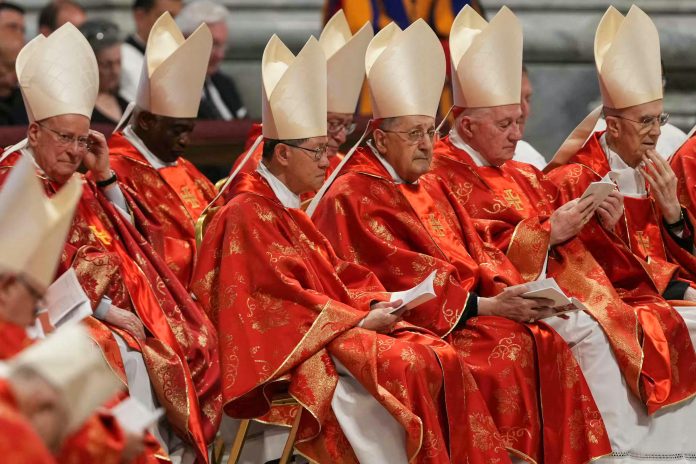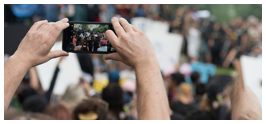“The Pope is dead. The Pope remains dead. And we have mocked him.”
This Nietzschean-sounding phrase may seem provocative just days after the death of Pope Francis, but it holds a meaning that transcends irony.
Pope Francis was a sign of contradiction in postmodern times. Too often reduced to a pontifex minimus, he instead embodied the very essence of pontifex—a bridge-builder, stripped of regal formalities and deeply engaged in the lived reality of a wounded world.
His was a kenotic papacy, one that willingly relinquished power in order to share in the poverty and fragility of the human condition. This was no mere gesture; it was a path. Evangelii Gaudium marked the first bold step of a Church “going forth,” inviting Christians to become bearers of joy and resist the self-referential loneliness of consumer culture.
Fratelli Tutti would later expand this vision into a call for “open fraternity,” centered on the integral development of the human person. Francis laid the foundations. But now, the Church must ask: Who will walk this path further? Who will enter the world’s peripheries and embody a Church shaped by mercy, dialogue, and peace?
We must not forget Francis’s final Urbi et Orbi, steeped in the legacy of John XXIII, who taught that all people of goodwill can be builders of peace. Nor should we forget Pasolini’s poem titled To a Pope—a hope that one day, a pontiff might care for someone like Zucchetto, the anonymous poor man trampled by the world. Francis would have had mercy on him. He symbolically left the Apostolic Palace and chose to be, quoting Pasolini, among “those wretched places, where mothers and children live in ancient dust and mud from another era.”
Pope Francis was one of us. And the new Pope must be the same.
In this moment, Luis Antonio Tagle stands out—not only as a viable candidate but as the natural heir to Francis’s vision. Born in 1957 and made cardinal by Benedict XVI, Tagle resonates with the same spirit of closeness, humility, and missionary fervor that defined Francis. His motto, Dominus est—“It is the Lord”—recalls the disciples at Emmaus, filled with wonder. He is a man of communion, a natural evangelizer, and a smiling Pope in the spirit of John Paul I.
Tagle’s closeness to Francis was clear during the 2015 papal visit to the Philippines, where he moved crowds not merely through charisma, but through a deeply pastoral presence.
The next Pope—whether or not he is “Roman” or seen as “the last” in apocalyptic speculations—must embody the heart of Francis’s teaching: that peace is rooted in truth, justice, love, and freedom, as John XXIII once wrote in Pacem in Terris.
Let it be a Pope named John, in honor of both the Council and the Baptist who prepared the way. But above all, let him be someone like Tagle—rooted in joy, fearless in communion, and ready to continue the radical journey Francis began. The next Pope must not only preside over all the Churches in charity but also become a pilgrim of hope in this Jubilee era—carrying the “scent of the sheep,” walking beside them, and boldly proclaiming new life.
It must be someone who embraces the four principles Francis repeatedly affirmed: time is greater than space, unity prevails over conflict, reality is more important than ideas, and the whole is greater than the part. Someone like Tagle is well-positioned to carry forward a “religious Silk Road,” as Jesuit Antonio Spadaro recently described this sort of new evangelization—engaging with cultural, geopolitical, and existential margins across continents.
The Church cannot go back now. The next Pope must not only preside over all the Churches in charity but must also be a pilgrim of hope in this Jubilee era—carrying the scent of the sheep, walking beside them, and boldly proclaiming new life.
Let us be clear: I also consider Pietro Parolin to be a strong and faithful candidate. A seasoned diplomat with a pastoral heart, he would be a “working Pope” in the vineyard of the Lord. His episcopal motto—Who will separate us from the love of Christ?—testifies to a theology of closeness. Personally, I had the honor of exchanging letters with him ahead of Pope Francis’s 2022 visit to my town L’Aquila during the Perdonanza Celestiniana—according to UNESCO, the first Jubilee of history.
However, I once came close to interviewing Cardinal Tagle during his time as President of Caritas Internationalis, but I was told he was extremely busy at the time. I missed the opportunity to hear firsthand the testimony of a Catholic pilgrim walking among the poor—a voice that would have been deeply meaningful for my city, which I had dared to call a “capital of peace” in a letter to Cardinal Parolin, even before Pope Francis’s pastoral visit to my town.
In this light, Luis Antonio Tagle emerges as a natural and coherent successor to Pope Francis, embodying a deep continuity with the outgoing pontificate. From a young age, his theological formation was shaped under Jesuit guidance, which endowed him with an Ignatian approach particularly attuned to the Church’s renewal through the lens of spiritual discernment—one of the cornerstones of Francis’s own papacy.
Tagle’s doctoral dissertation focused on episcopal collegiality, directly aligning him with the trajectory Francis initiated toward a synodal Church—a Church that listens, walks together, and shares authority in communion rather than through imposition. Moreover, he brings a rare ability to interpret and engage with the complexities of the contemporary world. As a former member of the International Theological Commission, he has long reflected on the Church’s role in a changing era.
Yet he also knows how to translate doctrine into pastoral closeness. Through The Word Exposed, a media program that brings the Gospel to global audiences, he has demonstrated how the Word of God can be incarnated through digital media, fulfilling the vision of the Second Vatican Council for evangelization in the age of social communication.
In his role as Prefect of the Congregation for the Evangelization of Peoples, Tagle has shown a concrete capacity to engage the global peripheries. His own geopolitical background enables him to listen to and understand the spiritual and social dynamics of Asia and the Global South—regions that are increasingly shaping the future of Catholicism.
Let the Spirit blow where it wills—but we may already discern in Tagle a shepherd ready to not only inherit Francis’s legacy, but to amplify its missionary momentum, continuing to build a Church that is open, listening, and walking with all.
Finally, I could consider that if Francis was the Pope who had the courage to forgive Luther, then Tagle would be the one capable of forgiving Marx—not in a reductive ideological sense, but by recognizing the human cry for dignity beneath systems and failures, and responding to it with the same mercy that made Francis a sign of contradiction in our time. Just as Jesus would have liked.
Francesco Di Giandomenico is a young graduate from L’Aquila, Italy, with a degree in Literary and Cultural Studies from the University of L’Aquila. He is currently pursuing a master’s degree in Philosophy at the same institution and aspires to teach at the secondary school level. As an independent researcher, he has participated in national and international conferences hosted by prestigious universities such as Rome, Salamanca, Padua, New York, and Princeton, presenting papers on literary topics—especially the work of Dante Alighieri, interpreted through a comparative lens in relation to both contemporary and later literary traditions. Enthusiastic about Church history and the relationship between the Church and the modern world, he earned a Diploma in Leadership and Management from the Pontifical Gregorian University in 2022, with a research project focused on the Canadian theologian and philosopher Bernard Lonergan, S.J. Following the 2009 earthquake in L’Aquila, he initiated a series of correspondences with the Vatican Secretariat of State, the Pontifical Commission for Sacred Archaeology, the Archdiocese of L’Aquila, and other institutions. His aim was to foster dialogue between state and ecclesiastical bodies after the discovery of a 4th-century Christian catacomb beneath the parish church of his hometown, San Lorenzo di Beffi. During the 2018 Synod of Bishops on Young People, he submitted a theological reflection titled “De Christifidelium Pulchritudine” (“On the Beauty of the Faithful”) to Cardinal Lorenzo Baldisseri, contributing to the Church’s ongoing dialogue with youth.









